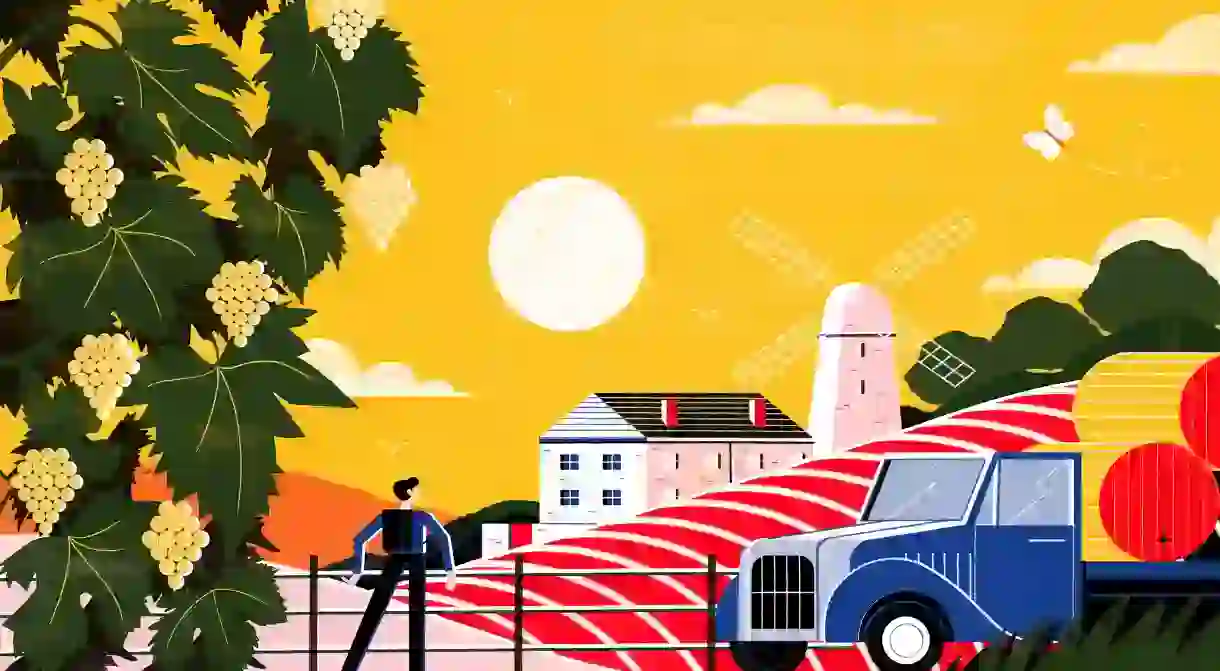Champagne in Style: A Guide to Visiting France’s Fabled Wine Region

Nothing feels more like escaping to the country than a visit to Champagne in France’s northeastern region. A couple of hours from Paris, it ticks all the boxes for a jaunt out of the city: vineyards for exploring, history and architecture and best of all, bubbly on tap. A few days will allow you to reboot and get a real flavour for this province, which you’ll undoubtedly want to return to. Here’s how to go about it.
Champagne culture and tastings
Champagne’s unofficial capital of Reims is a city rich in royal and religious history. Its Gothic 13th-century Notre-Dame Cathedral, for instance, once served as the place where French kings were crowned, while the former residence of the Archbishop of Reims, the Palais du Reims, has associations with past kings of France. For this reason, a few hours can be well spent tracing the architecture of the city before exploring what this region is known for first and foremost: champagne.
The champagne purveyors of this namesake region read like a roll call for best-in-class bubbly: Moët & Chandon, Veuve Clicquot and Laurent-Perrier are just a few of the behemoths based in the region, which boasts around 260 houses producing an average of 300 million bottles of champers a year. Stretching across 33,000 hectares (81,545 acres), including communes like Hautvillers (the birthplace of champagne), Champillon and Dizy, these champagne hillsides, houses and cellars retain their original charm under the watchful eye of UNESCO, who have numerous historic vineyards on their World Heritage list.

In high summer, the vineyards will be in bloom, but visiting out of season also has its advantages, mainly the fact that there are fewer souls around. Booking in advance, there are numerous places where you can sample the fruits of this region’s labour. The Leclerc Briant champagne house in Épernay, which practises unique production rituals such as following the astrology and lunar cycles, is one of the few champagne vineyards to practise a complex biodynamic process. While you’re in the commune that’s often dubbed the World Capital of Champagne, head to its famous L’Avenue de Champagne, which is exactly what you’d expect: a glorious stretch of champagne houses, including the likes of Moët & Chandon.
Getting to Champagne
Reims has an airport that you can reach directly from London Heathrow or Paris Charles de Gaulle, though flying isn’t a very sustainable option with both journeys so short. Being mindful of your carbon footprint, embrace slow travel by taking the train, or if you’re on a tighter budget, the coach. The train is not really that slow, exceeding 300 kilometres an hour (186 miles an hour) at times; the Eurostar and TGV will get you to the wine-growing region in a morning – about the same time as you’d spend flying, from start to finish. Starting in London, the Eurostar will whisk you to Paris Gare du Nord in a couple of hours – all you need is a good book to pass the time – then from there you can catch the high-speed TGV to Champagne-Ardenne. This can take anything between 40 minutes and two hours, depending on how many changes you need to make on the service you choose. Alternatively, if you’re coming from the east of France, you can hop on the TGV from Strasbourg, which will get you to Champagne-Ardenne in under two hours.

Where to stay in Champagne
The only hotel of its calibre in Champillon and the surrounding verdant areas, Royal Champagne Hotel & Spa sits on the plot of a former coach house that Napoleon and his entourage were known to visit – quite possibly when en route to Reims. Naturally, there’s the Josephine Suite that’s “made for an empress”, while all rooms (outfitted with Hèrmes toiletries) overlook vineyards for miles; the quaint commune of Champillon is a stone’s throw from the hotel, with Épernay about 15 minutes away in the car.
From the hotel, you can explore the neighbouring roads and trails by foot or bicycle – just be smart with your footwear choice. Back at the hotel, designed by local architect Giovanni Pace, Michelin-star cuisine waits to be devoured and its spa demands to be enjoyed, both for its facilities, such as the hammam and sauna, and its unparalleled views of the vineyards. There’s an emphasis on being present in the space – whether that’s lounging about in the library, taking to the decking with a glass of champagne in hand, or enrolling in one of its many fitness retreats such as pilates, qigong or yoga.













